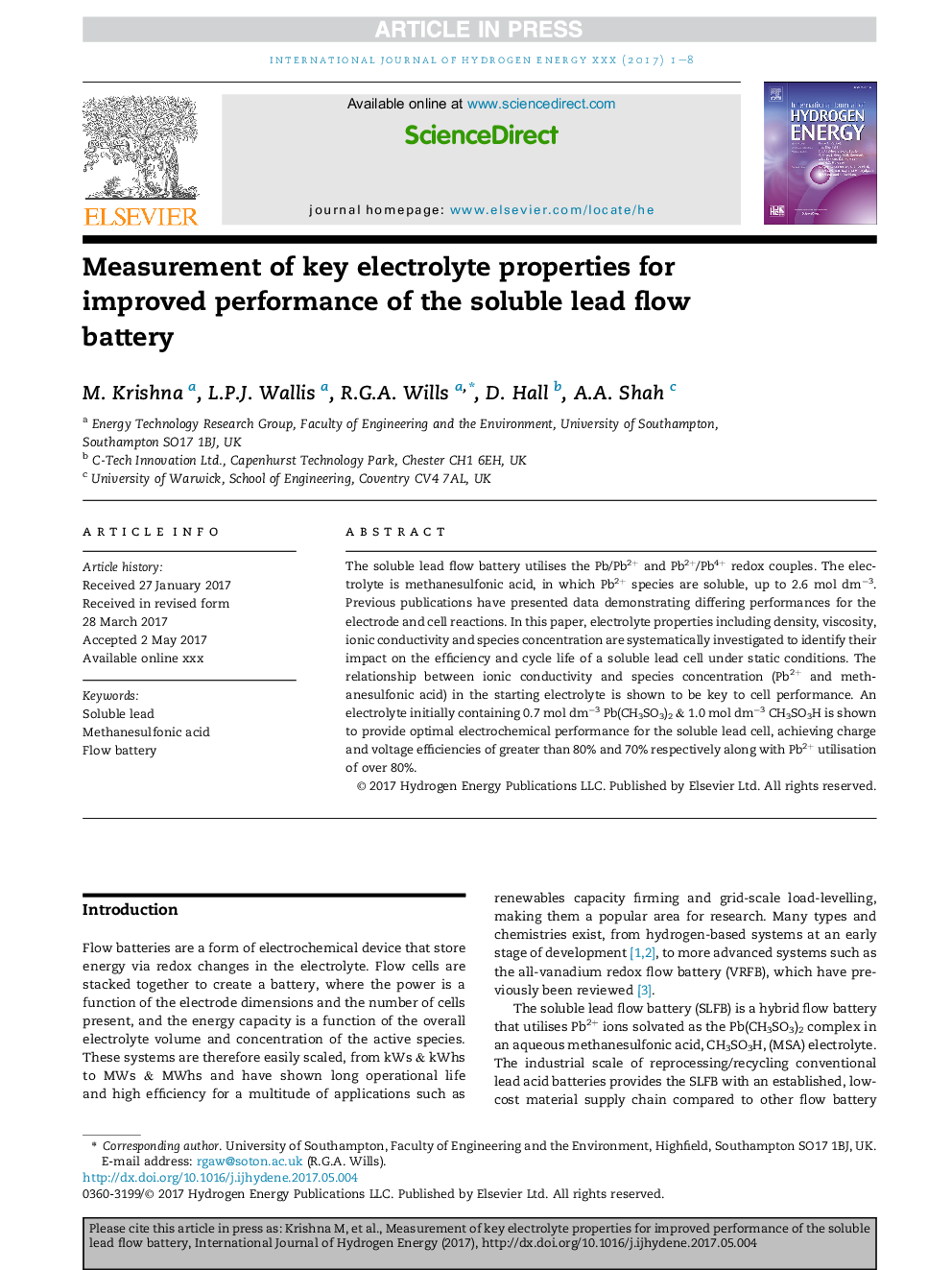| Article ID | Journal | Published Year | Pages | File Type |
|---|---|---|---|---|
| 5146213 | International Journal of Hydrogen Energy | 2017 | 8 Pages |
Abstract
The soluble lead flow battery utilises the Pb/Pb2+ and Pb2+/Pb4+ redox couples. The electrolyte is methanesulfonic acid, in which Pb2+ species are soluble, up to 2.6 mol dmâ3. Previous publications have presented data demonstrating differing performances for the electrode and cell reactions. In this paper, electrolyte properties including density, viscosity, ionic conductivity and species concentration are systematically investigated to identify their impact on the efficiency and cycle life of a soluble lead cell under static conditions. The relationship between ionic conductivity and species concentration (Pb2+ and methanesulfonic acid) in the starting electrolyte is shown to be key to cell performance. An electrolyte initially containing 0.7 mol dmâ3 Pb(CH3SO3)2 & 1.0 mol dmâ3 CH3SO3H is shown to provide optimal electrochemical performance for the soluble lead cell, achieving charge and voltage efficiencies of greater than 80% and 70% respectively along with Pb2+ utilisation of over 80%.
Keywords
Related Topics
Physical Sciences and Engineering
Chemistry
Electrochemistry
Authors
M. Krishna, L.P.J. Wallis, R.G.A. Wills, D. Hall, A.A. Shah,
